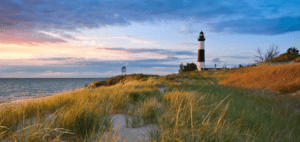The Hot Springs of Iceland and Japan: Unveiling Geothermal Marvels
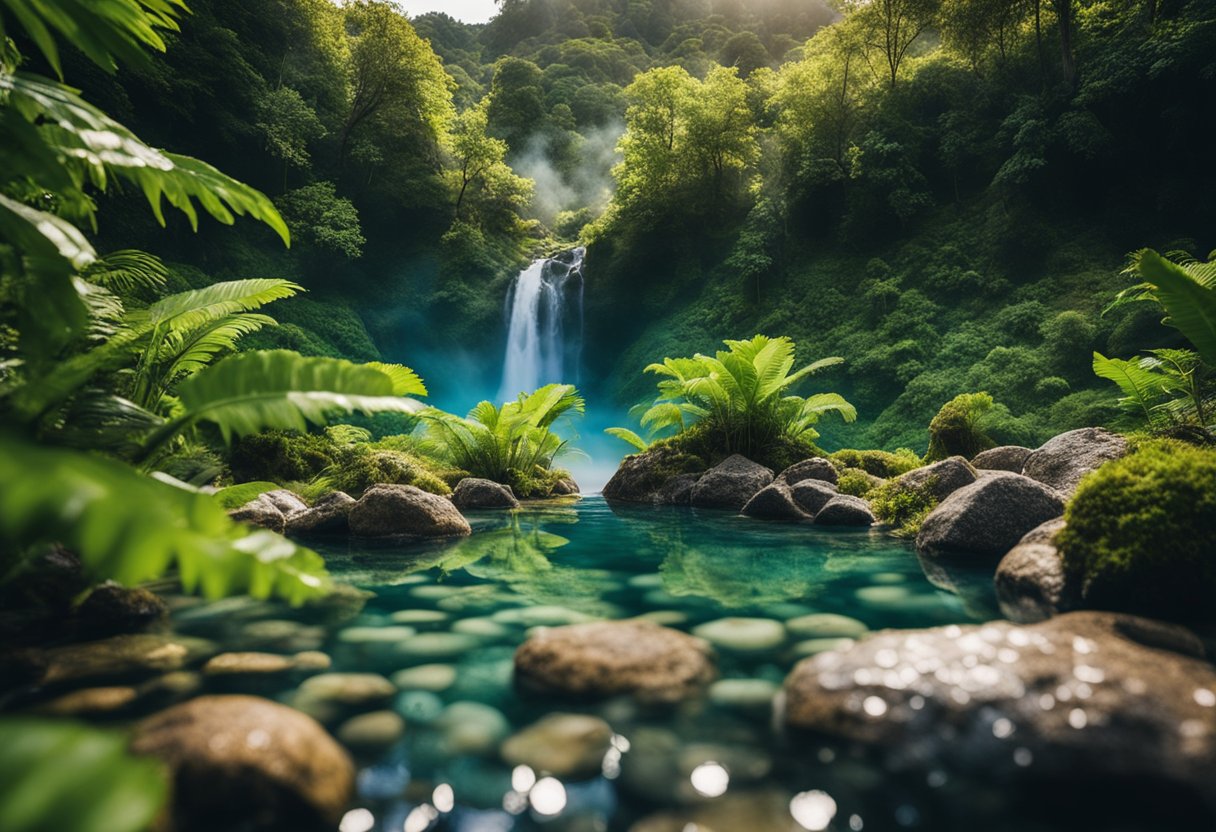
Updated On: April 20, 2024 by Aya Radwan
Geothermal activity has long been a source of fascination and utility worldwide, and nowhere is this more evident than in the enchanting hot springs of Iceland and Japan. In Iceland, the geothermal wonders are bubbling geysers, hot springs, and fumaroles dotted along the dramatic landscape. The land is etched with volcanic and geothermal features that create natural spas, such as the oldest hot spring in Iceland, the Secret Lagoon, and the legendary Blue Lagoon. The healing waters of these springs have drawn visitors for centuries, seeking relaxation and the Icelandic wilderness’s awe-inspiring beauty.
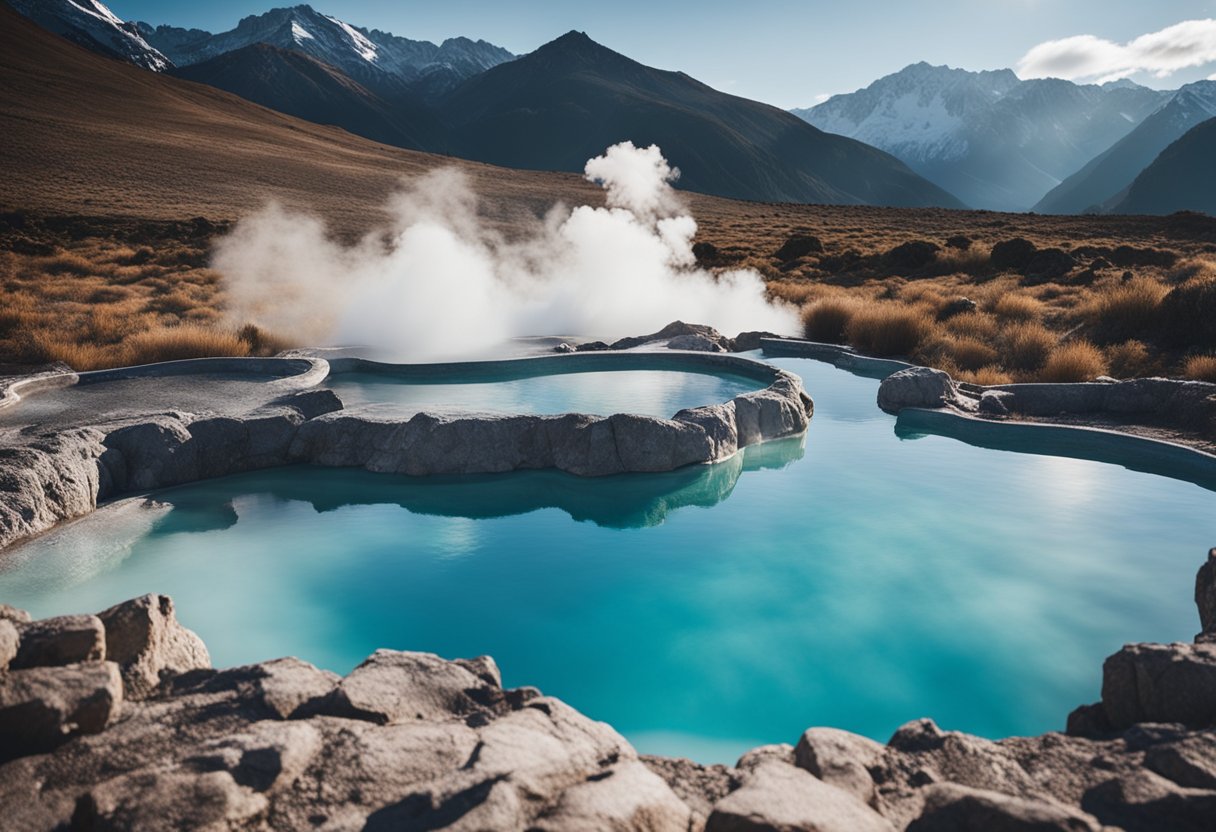
Meanwhile, Japan’s relationship with its onsen, or natural hot springs, is profoundly entwined with the national culture, offering a unique window into the traditional and contemporary Japanese way of life. The country’s volcanic activity provides a wealth of opportunities for relaxation and health across its many onsens, from the northern reaches of Hokkaido to the southern islands of Kyushu. The waters are often said to have healing properties, with each spring boasting different mineral compositions that attract health-conscious visitors and those looking for serenity away from the bustling city life.
Table of Contents
Natural Wonders of Iceland
Iceland, often dubbed the ‘Land of Fire and Ice’, is home to some of the world’s most remarkable geothermal wonders. Our journey brings us to iconic sites where the Earth’s geothermal power creates relaxing and picturesque hot springs.
The Blue Lagoon
Known for its milky-blue geothermal waters, The Blue Lagoon is one of Iceland’s most famous attractions. Rich in minerals like silica and sulphur, the lagoon’s warm waters are reputed for their skin-healing properties. Visitors flock to this man-made spa, ensconced in the heart of a lava field, for a chance to soak in its therapeutic waters and to apply its famous silica mud masks.
Golden Circle Geothermal Area
The Golden Circle geothermal area is popular with some of Iceland’s most stunning geothermal sights. The Geysir geothermal field boasts spouting geysers and bubbling Earth pools within this circuit. The area provides a dramatic display of the Earth’s subterranean power.
Landmannalaugar Highlands
The Landmannalaugar Highlands offer a natural geothermal bathing area amidst a landscape dotted with rhyolite mountains, creating a kaleidoscope of earthy hues. This highland region is renowned for its hiking trails, which lead adventurers through breathtakingly rugged terrain.
Reykjadalur Geothermal River
For a more secluded geothermal experience, Reykjadalur Geothermal River lies in a valley rich with hot springs, mud pots, and steaming vents. The ‘Steamy Valley’ has a naturally heated river where one can bathe while surrounded by striking green landscapes.
The Westfjords and Drangsnes Hot Pots
In the remote Westfjords, visitors discover Drangsnes Hot Pots, a series of small geothermal hot tubs right on the ocean’s edge. This area is less frequented by tourists, offering a series of intimate, natural hot springs to gaze at dramatic fjord views.
Exploring Hot Springs in Japan
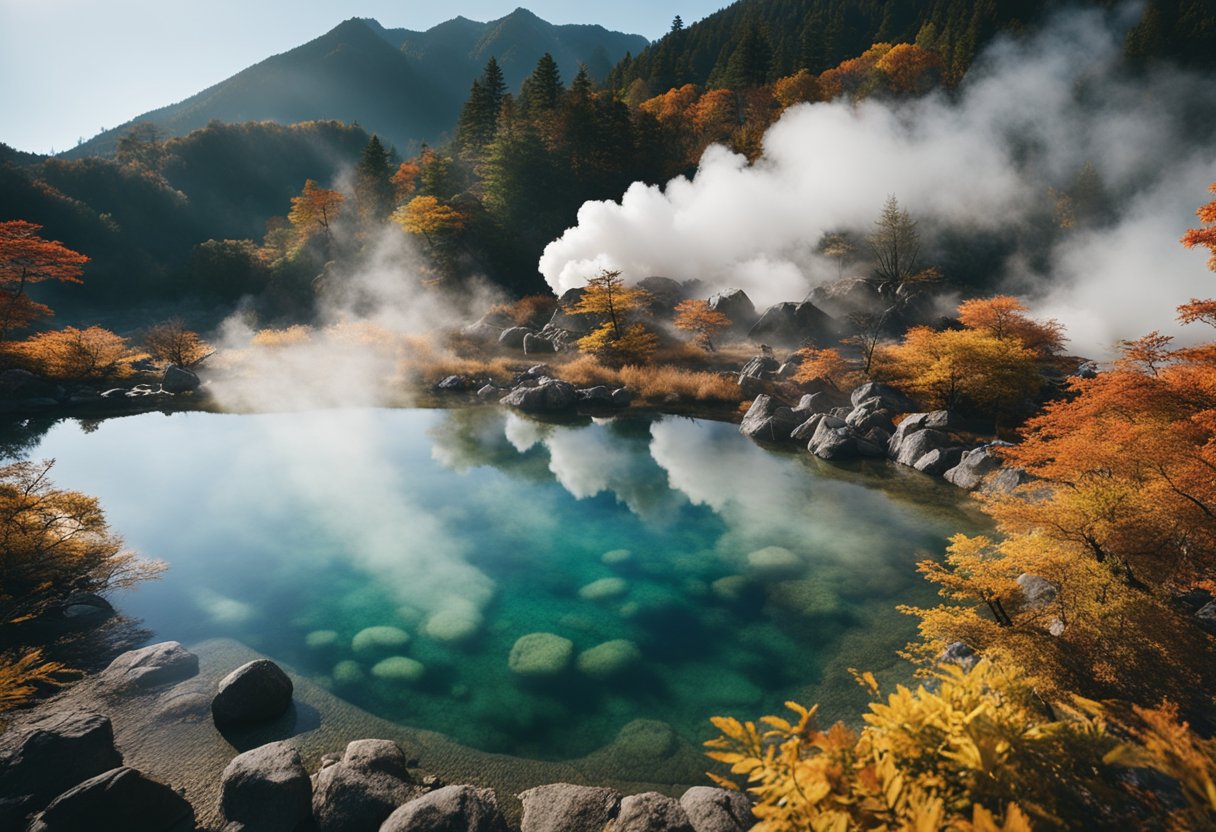
As we dive into the geothermal wonders of Japan, we uncover a rich tapestry where nature’s volcanic fury gives rise to a soothing onsen, deeply intertwined with Japanese culture. Here’s what you’ll learn about the hot springs in Japan:
Onsen Etiquette
Approaching an onsen, we must honour the deeply rooted customs that define the Japanese hot spring experience. Firstly, disrobe entirely in the designated changing area. Secondly, cleanse thoroughly at the shower stations before you enter the communal bath. Remember, the water in the onsen is for soaking, not soaping or rinsing.
Japan’s Most Famous Hot Springs
On the island of Kyushu, Beppu boasts an incredible array of hot springs, positioning it as the nation’s hot spring capital. Meanwhile, Kusatsu in Gunma prefecture cascades with the country’s most prolific geothermal waters. Exploring these sites, one experiences the therapeutic embrace that only nature’s heat can provide.
Nature and Volcanic Activity
Our archipelago sits on the Pacific Ring of Fire, with over 100 active volcanoes shaping our landscape. The volcanic activity gives Japan abundant hot springs, making it a prime destination for those seeking geothermal marvels amid nature. In regions such as Tsuchiyu Onsen, the Earth’s fiery heart pumps life into our springs.
Hot Springs and Japanese Culture
For us, onsen are more than just places to bathe; they are cultural institutions. They foster community, facilitate healing, and embody the Japanese connection to nature. Hot springs are featured in our folklore, art, and even how we travel, as many Japanese holiday plans are built around these thermal retreats.
Our exploration reveals that Japan’s hot springs are not just physical destinations but ingrained in our identity’s fabric.
Health and Relaxation Benefits
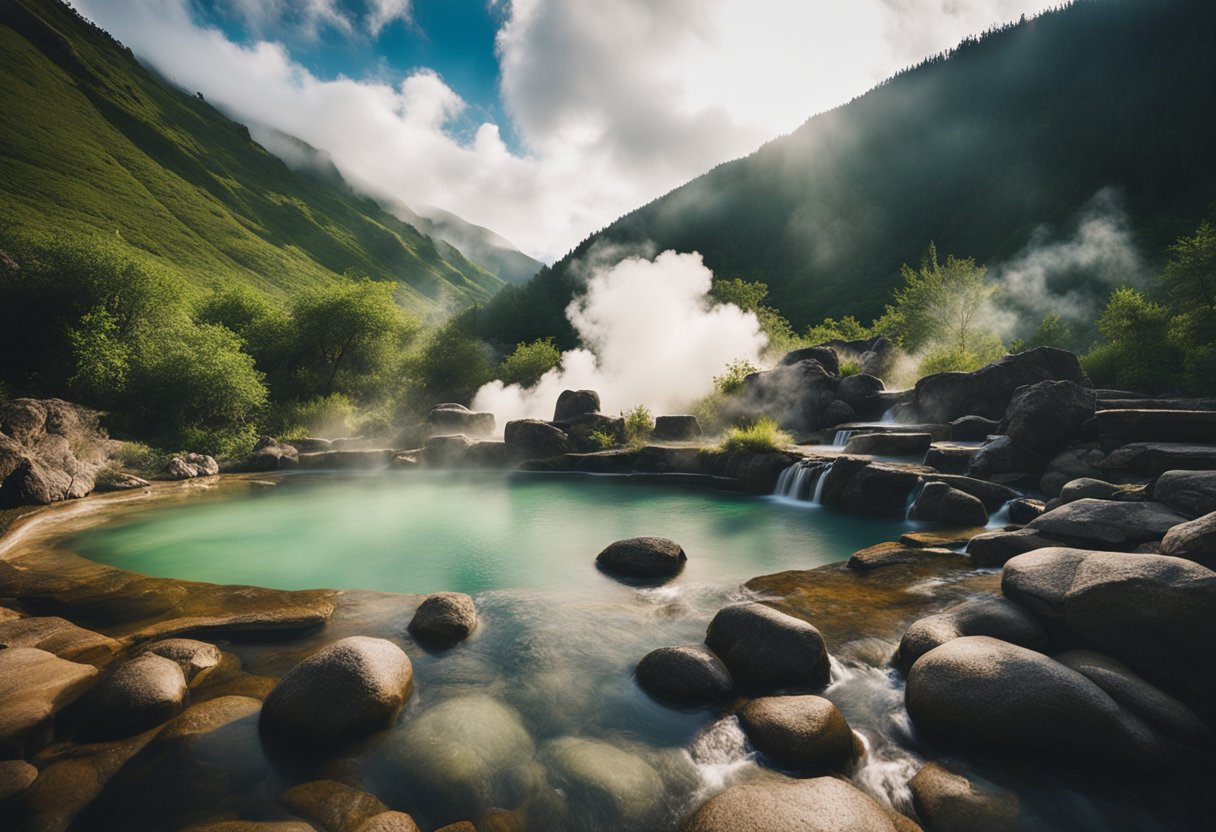
Geothermal springs have long been celebrated for their health and relaxation benefits. The naturally heated waters are rich with minerals that have therapeutic effects on the body, and the experience of soaking in these waters provides a tranquil escape from the stresses of daily life.
Therapeutic Qualities of Geothermal Waters
Geothermal waters are naturally infused with minerals like silica and sulphur, which are thought to have health-promoting properties, particularly for improving skin conditions like eczema. Soaking in these mineral-rich waters can aid blood circulation, as the warmth helps blood vessels dilate, easing blood flow. This process can be essential for physical health, soothing aches and promoting muscle recovery after exercise.
- Health Benefits: Improved skin health, enhanced blood circulation
- Conditions Addressed: Eczema and other skin conditions
Relaxation and Wellness Experiences
The ambience of natural hot springs creates an unparalleled relaxation experience. In Iceland and Japan, these springs often comprise a larger spa setting, where guests can unwind between the geothermal waters, saunas, and steam rooms. This variety offers a holistic approach to wellness, allowing individuals to find a personalised way to relax. The experience is optimised to induce a state of calm, contributing significantly to mental and emotional well-being.
- Relaxation Methods: Hot springs, saunas, steam rooms
- Experiences Offered: Personalised relaxation and wellness journeys
Utilising the restorative powers of geothermal waters in Iceland and Japan, we find a merging of natural beauty with health and relaxation woven seamlessly into the tradition of spa culture.
Geothermal Energy and Sustainability

Geothermal energy presents a significant opportunity for countries like Iceland and Japan, where it’s utilised for heating and contributing to their sustainability goals. This section will examine this energy source’s role in both nations within the broader context of renewable energy and eco-friendly practices.
Renewable Energy Use in Iceland and Japan
Iceland is a world leader in renewable energy, with nearly all of its electricity and heating sourced sustainably, a fact that’s been instrumental in shaping its reputation as an eco-conscious destination. Geothermal resources play a vital role, with places like the newest hot spring spa in Hvalfjordur being a testament to this commitment. In Japan, geothermal energy contributes to the renewable mix, providing a stable and reliable source in a country renowned for its hot springs or onsen. Efforts continue to balance energy needs with geological considerations, tapping into this resource more extensively post-Fukushima.
Environmental Impact and Eco-Friendly Practices
Using geothermal resources requires us to closely monitor and manage our environmental footprint, an area where Iceland and Japan have demonstrated commitment. Icelanders have capitalised on their geothermal hot springs for sustainable energy, transforming their environment into one where cities like Reykjavik are heated almost entirely without fossil fuels.
Similarly, geothermal plants operate in Japan with meticulous regulations to mitigate impacts on local ecosystems. Eco-friendly practices extend to multiple aspects, including low-emission power generation and the eco-friendly design of facilities to blend with natural surroundings, like the seamless integration seen at Hvammsvik.
These examples show the synergistic relationship between geothermal energy and sustainability efforts, shaping a world where renewable resources heat our homes and power our lives while protecting the planet.
Adventure and Activities
From the steamy hot springs of Iceland and Japan’s onsen towns, adventure beckons for travellers seeking unique and awe-inspiring experiences. Whether trekking along rugged trails or soaking in geothermal waters under the aurora, both Iceland and Japan offer many activities set against dramatic landscapes.
Hiking Trails and Geothermal Discovery
In Iceland, hiking is a fantastic way to explore the geothermal wonders like Haukadalur Valley, where the ground breathes with hot springs and spouting geysers. The trails often lead to scenic vistas and offer a firsthand view of Iceland’s active geology. In Japan, hiking paths meander through mountainous areas rich with volcanic activity, leading adventurers to discover inviting hot spring retreats in nature.
Iceland’s Trails:
- Haukadalur Valley – Geysers & Hot Springs
- Reykjadalur Valley – Warm Rivers & Steam Vents (Explore the captivating area)
Japan’s Paths:
- Hakone – Lake Ashi & Sulphur Springs
- Ibusuki – Sand Baths & Hot Spring Trails
Winter Activities and Northern Lights
The Northern Lights, or ‘aurora borealis’ in Iceland, presents a spectacle best enjoyed from the tranquillity of a geothermal pool. We recommend embarking on a winter adventure that pairs the dance of the auroras with a soothing soak in nature’s hot tubs. Similarly, Japan’s Hokkaido island offers winter sports with a chance to unwind in onsen baths amidst a snow-draped landscape.
Iceland’s Winter Soak:
- Views of the Aurora Borealis from Steamy Waters
Japan’s Snowscape:
- Skiing & Snowboarding with Onsen Relaxation
Wildlife Watching Opportunities
Encounters with wildlife add an extra thrill to our adventures in Iceland and Japan. In Iceland, whale watching tours allow us to marvel at the majestic creatures of the deep blue, often sighted not far from geothermal areas. The country’s diverse bird population is also a draw for avid birdwatchers. While known for its serene deer in places like Nara, Japan also surprises us with opportunities to observe endemic species in the wild, promoting a connection with nature that stays with us long after the journey ends.
Iceland’s Marine Giants:
- Whale Watching Tours from Reykjavík (Discover marine life)
- Puffin Spotting in Coastal Areas
Japan’s Wildlife Trails:
- Nara’s Deer – Gentle & Approachable
- Remote Islands – Rare Animal Species
In Iceland and Japan, the natural geothermal features enhance our adventure-filled itineraries, blending exploration with moments of relaxation in awe-inspiring settings. Whether hiking towards a horizon etched with volcanic silhouettes or gazing up at the night sky painted with the northern lights, these experiences forge unforgettable memories and a deep connection with the earth’s vibrant energy.
Cultural Significance and Historical Sites
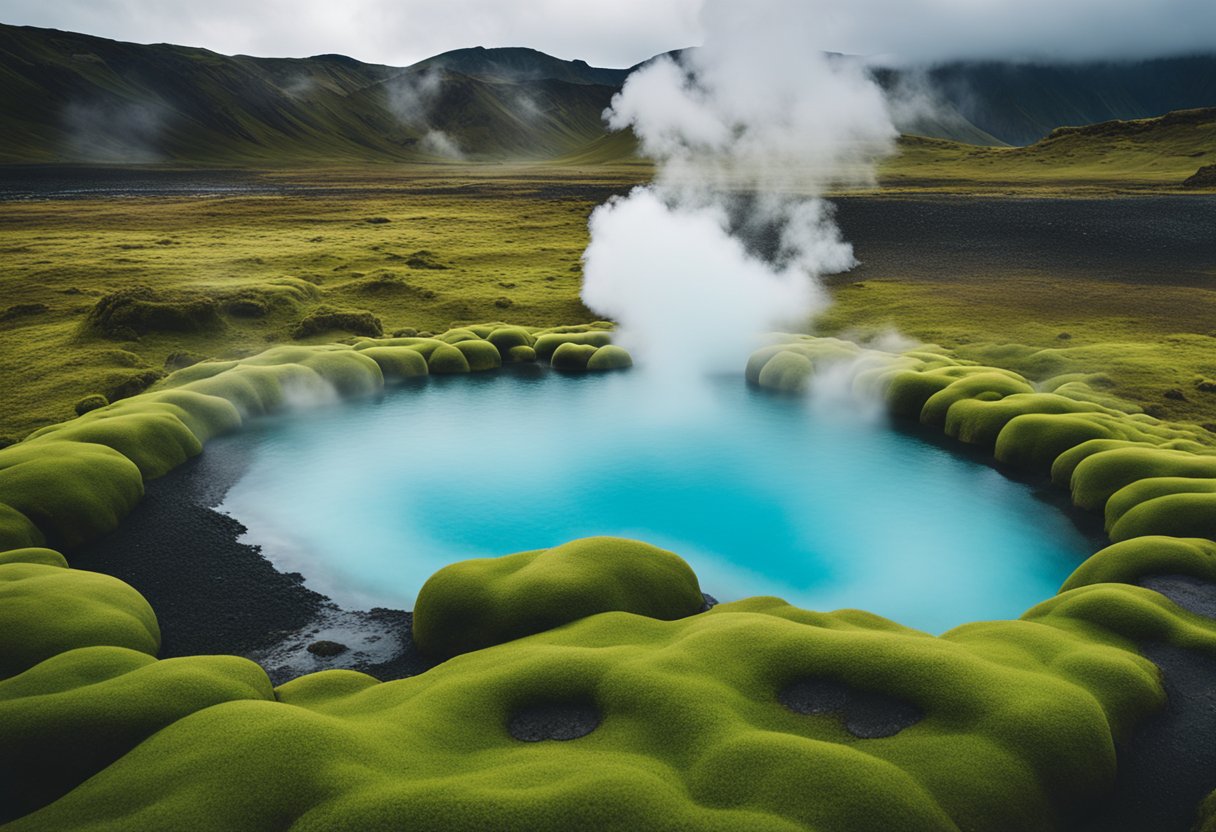
In exploring geothermal wonders worldwide, we recognise hot springs’ deep cultural importance and historical richness in Iceland and Japan. Their role extends beyond natural phenomena, as they have been integrated into societies’ cultural fabric and historical narratives, particularly in Iceland and Japan.
Traditional Uses of Hot Springs
Hot springs in Iceland and Japan serve more than just a wellness function; they’re woven into their people’s social and cultural lives. In Iceland, communal bathing in geothermal waters dates back to the Viking era. It is said that even infants are introduced to the warm embrace of these waters from a young age, indicating their centrality in Icelandic living. In contrast, the Japanese onsen has been a cornerstone of communal health and relaxation, with these thermal baths often associated with Shinto purification rituals.
Historical Spas and Turf Houses
Historic sites like turf houses in Iceland, which are integral to the country’s architectural heritage, often lie near hot springs. These structures showcase a history of harnessing geothermal heat for warmth and cooking, illustrating an innovative use of natural resources. Many Icelandic hot springs, such as the famous Snorralaug, are tied to historical figures and events, being featured in the Sagas of Icelanders. On the other hand, Japan’s history boasts the earliest accounts of onsen dating back to the 8th century in the chronicles of Nihon Shoki, indicating that these hot springs have been integral to Japanese culture for centuries.
Modern Transformations and Tourism
Tourism has transformed many hot springs into modern sanctuaries that cater to travellers from around the globe. The Blue Lagoon in Iceland is a prime example – a place where visitors can experience geothermal bathing in a unique mineral-rich environment. In Japan, historical onsen towns like Beppu have evolved into tourist hotspots, offering a blend of traditional bathing culture with the convenience of modern amenities. Both countries have effectively used hot springs to promote cultural exchange and sustainable tourism, preserving the historical essence while providing contemporary comforts.
Travel Tips and Practical Information
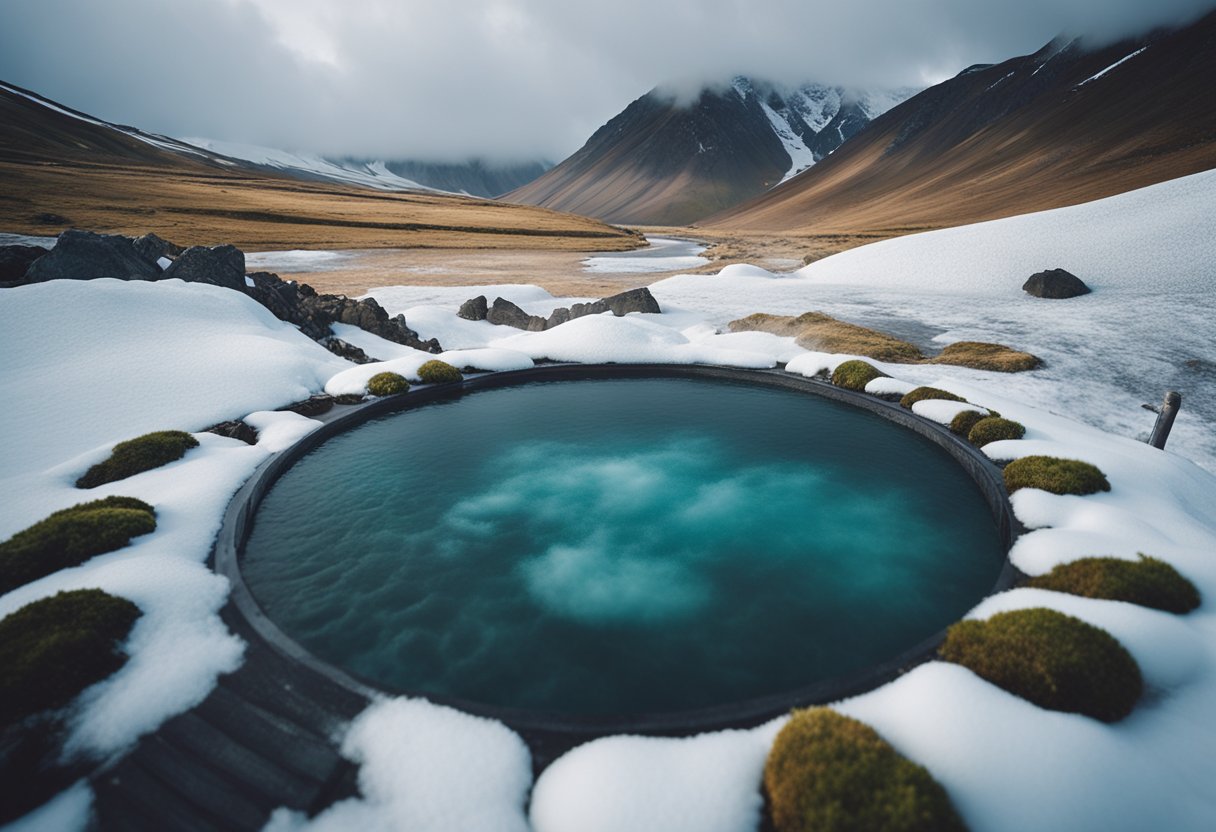
For those seeking the geothermal wonders of Iceland and Japan, understanding the best times to visit, the facilities available, and how to respect local customs and land is essential. Let us guide you through the intricacies of planning your hot spring adventure.
Best Times to Visit
Iceland: The summer months, from June to August, are ideal for visiting hot springs as the weather is mild and the days are long. However, winter offers the magical Northern Lights as a backdrop if you don’t mind the cold.
Japan: Hot springs can be enjoyed year-round, but the winter season from December to February offers a serene experience, especially when snow envelops the landscape.
Facilities and Amenities
Iceland: Most hot springs boast essential amenities such as changing rooms and showers. For a prime example, visit this valley known for various temperatures and facilities, ensuring comfort during your soak.
Japan: Japanese hot springs, or onsen, are typically part of well-equipped bathhouses with restaurants and relaxation areas.
- Note: Crowds tend to be larger on weekends and holidays, so consider visiting on weekdays for a more tranquil experience.
Respecting Private Land and Local Communities
When accessing hot springs in Iceland and Japan, it is crucial to be mindful of private land and community rules. Some pools in Iceland are on private property, where permission and an entrance fee might be required.
- Iceland and Japan: Always follow guidelines for environmental protection and show respect to the local community by keeping noise levels down and removing any litter.
- Japan: In Japan, observe etiquette such as washing before entering the pool and keeping towels out.
By adhering to these travel tips and practical information, we ensure our adventures through Iceland and Japan’s geothermal wonders are enjoyable and respectful.
Unique Experiences in Iceland and Japan
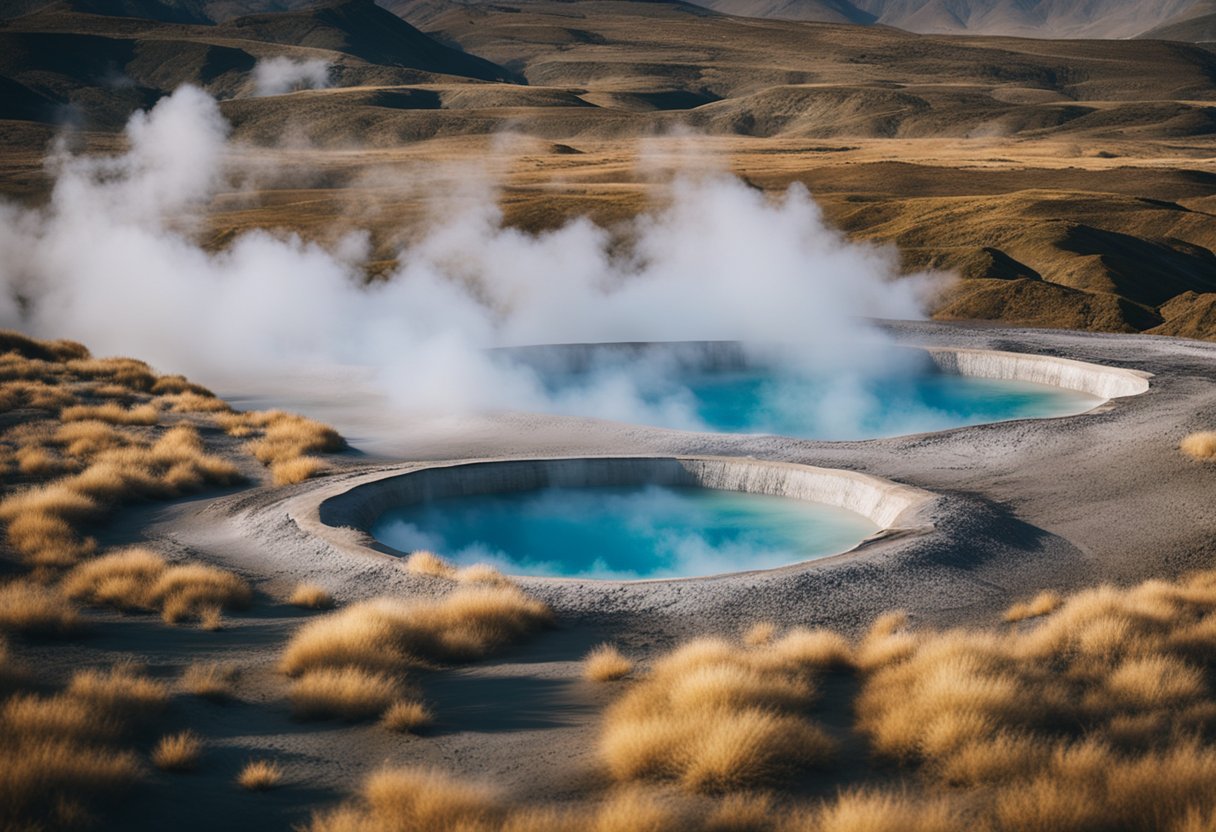
In the realms of geothermal wonders, Iceland and Japan offer unparalleled experiences that merge nature’s artistry with human innovation. These countries showcase hot springs in breathtaking landscapes, a perfect backdrop for extraordinary experiences.
Swimming Under the Midnight Sun and Starry Skies in Iceland and Japan
The phenomenon of the midnight sun in Iceland gifts us prolonged hours of daylight where one can swim under a sun that never sets. Imagine immersing yourself in warm, soothing waters while the horizon glows with the ethereal light of a sun hovering just below the skyline. Contrastingly, Japan’s starry nights provide a celestial canopy above as we bathe in its hot springs, harmonising with the tranquillity that night-time brings.
Infinity Pools and Scenic Views
Iceland’s hot springs, such as the magnificent Hvammsvik, often feature infinity pools that blend seamlessly into their surrounding landscapes. Here, one can bask in waters that edge into the open wilderness while one’s eyes feast on scenic views of mountainous terrain and the untamed Icelandic wilderness. In Japan, the infinity pools are frequently set against picturesque backdrops like rolling hills or lush forests, providing a serene swimming experience that feels intimate and expansive.
Off the Beaten Path
Those seeking tranquillity and a unique geothermal experience will find solace in Iceland and Japan’s less travelled routes, where remote hot springs and nature baths offer a serene retreat from the well-trodden tourist trails.
Discovering Remote Hot Springs in Iceland and Japan
In Iceland, even the most isolated hot springs, such as Landbrotalaug, provide an intimate connection with nature. These hidden gems are often nestled within the rugged landscape, accessible by paths less travelled. Experiencing the peace of these geothermal waters, sometimes big enough for only two or three people, gives visitors a personal slice of Iceland’s natural splendour.
Japan’s remote onsen, surrounded by the country’s scenic beauty, offers a cultural and spiritual experience. These thermal baths, often located in the mountains or small villages, are important in Japanese culture for their therapeutic properties and testament to the country’s respect for nature.
Nature Baths Beyond the Popular Spots
Beyond Iceland’s famed Blue Lagoon lie undiscovered nature baths waiting for the more intrepid travellers. Places like the geothermal hills near Hveragerdi offer a rewarding hike through stunning scenery, ending in a tranquil soak in the naturally heated waters.
In contrast, Japan’s lesser-known onsen baths provide a serene experience amidst mountainous backdrops or within small towns where the baths are integral to local life. These baths present an authentic encounter with Japan’s geothermal wonders, away from the more visited sites, allowing for a peaceful communion with nature’s warmth.
Frequently Asked Questions
This section addresses some of the most common inquiries about the stunning geothermal hot springs found in Iceland and Japan, delving into their unique characteristics, cultural significance, accessibility, renewable energy usage, conservation efforts, and health benefits.
What distinguishes the geothermal hot springs of Iceland from those of Japan?
The hot springs of Iceland are renowned for their dramatic settings among volcanic landscapes and the Northern Lights, such as those at Hvammsvík Hot Springs. In contrast, Japan’s onsens are often part of traditional bathhouses steeped in centuries of ritual, epitomised by the iconic blue waters of Beppu.
How have the hot springs of Iceland and Japan shaped local culture and traditions?
In Iceland, hot springs like the Sky Lagoon are central to social life and well-being, whilst in Japan, onsens are integral to the culture of hospitality and Zen, influencing practices like the ryokan and traditional Japanese inns.
Can visitors access the geothermal hot springs throughout the year in both Iceland and Japan?
Yes, the geothermal hot springs in Iceland and Japan are accessible year-round, offering a warming contrast to the Icelandic cold and snow and a comforting retreat within Japan’s varying climates.
In what ways are the geothermal hot springs utilised for renewable energy in Iceland and Japan?
Both Iceland and Japan harness the power of hot springs for renewable energy. In Iceland, geothermal energy is a major power source that heats homes and generates electricity. Like at Beppu, Japan also taps into geothermal energy, though on a smaller scale than other sources.
What measures are in place to preserve the natural environment around the hot springs in Iceland and Japan?
Iceland and Japan both implement environmental safeguards such as regulated access, sustainable tourism practices, and ongoing conservation efforts to protect the delicate ecosystems of their geothermal attractions, ensuring the longevity of these natural wonders.
What are the health benefits associated with bathing in the geothermal hot springs of Iceland and Japan?
The mineral-rich waters of hot springs, like those in Iceland and Japan, are believed to have therapeutic effects, aiding in stress relief, skin health, and the alleviation of various aches and ailments.


